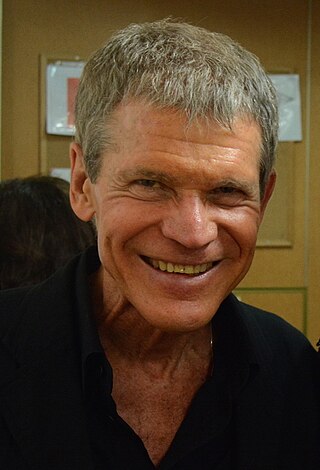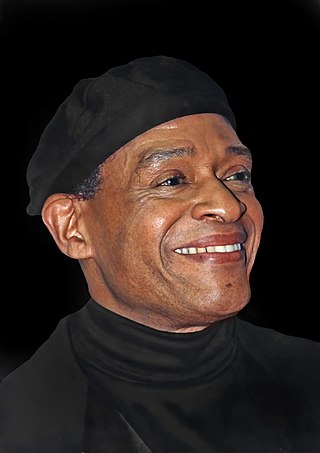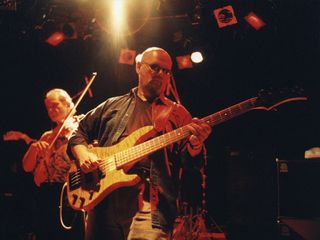
The Meters are an American funk band formed in 1965 in New Orleans by Zigaboo Modeliste (drums), George Porter Jr. (bass), Leo Nocentelli (guitar) and Art Neville (keyboards). The band performed and recorded their own music from the late 1960s until 1977 and played an influential role as backing musicians for other artists, including Lee Dorsey, Robert Palmer, Dr. John, and Allen Toussaint. Their original songs "Cissy Strut" and "Look-Ka Py Py" are considered funk classics.
The 20th Annual Grammy Awards were held February 23, 1978, and were broadcast live on American television. They were hosted by John Denver and recognized accomplishments by musicians from the year 1977.

Ian Ernest Gilmore Evans was a Canadian–American jazz pianist, arranger, composer and bandleader. He is widely recognized as one of the greatest orchestrators in jazz, playing an important role in the development of cool jazz, modal jazz, free jazz, and jazz fusion. He is best known for his acclaimed collaborations with Miles Davis.

Callen Radcliffe Tjader Jr. was an American Latin Jazz musician, often described as the most successful non-Latino Latin musician. He explored other jazz idioms, especially small group modern jazz, even as he continued to perform music of Africa, the Caribbean and Latin America.

David William Sanborn was an American alto saxophonist. Though Sanborn worked in many genres, his solo recordings typically blended jazz with instrumental pop and R&B. He released his first solo album Taking Off in 1975, but had been playing the saxophone since before he was in high school and was a session musician long before its release. He was active as a session musician and played on albums by various artists.

Alwin Lopez Jarreau was an American singer and songwriter. His 1981 album Breakin' Away spent two years on the Billboard 200 and is considered one of the finest examples of the Los Angeles pop and R&B sound. The album won Jarreau the 1982 Grammy for Best Male Pop Vocal Performance. In all, he won seven Grammy Awards and was nominated for over a dozen more during his career.

Jean-Luc Ponty is a French jazz and jazz fusion violinist and composer.

Eddie Harris was an American jazz musician, best known for playing tenor saxophone and for introducing the electrically amplified saxophone. He was also fluent on the electric piano and organ. His best-known compositions are "Freedom Jazz Dance", popularized by Miles Davis in 1966, and "Listen Here".
The Thad Jones/Mel Lewis Jazz Orchestra was a jazz big band formed by trumpeter Thad Jones and drummer Mel Lewis in New York in 1965. The band performed for twelve years in its original incarnation, including a 1972 tour of the Soviet Union during the height of the Cold War. The collaboration ended in 1978 with Jones suddenly moving to Copenhagen, Denmark, after which the band became the Mel Lewis Jazz Orchestra. Since the death of Lewis in 1990 it has been known as the Vanguard Jazz Orchestra. They have maintained a Monday-night residency at the Village Vanguard jazz club in New York for five decades. The band won Grammy Awards for the album Live in Munich in 1978 and for the album Monday Night Live at the Village Vanguard in 2009.

Dixie Dregs is an American rock band from Augusta, Georgia. Formed in 1970, the band is known for instrumental music that fuses elements of rock, classical music, country, jazz and bluegrass into an eclectic sound that is difficult to categorize. Recognized for their virtuoso playing, the Dixie Dregs were identified with the southern rock, progressive rock and jazz fusion scenes of the 1970s.
The Vako Orchestron is a keyboard instrument made in the 1970s, that produces its sound through electronic amplification of sounds pre-recorded on an optical disc. It is the professional version of the Mattel Optigan, an earlier and lower-priced model intended for amateur musicians.

John Carl Hendricks, known professionally as Jon Hendricks, was an American jazz lyricist and singer. He is one of the originators of vocalese, which adds lyrics to existing instrumental songs and replaces many instruments with vocalists, such as the big-band arrangements of Duke Ellington and Count Basie. He is considered one of the best practitioners of scat singing, which involves vocal jazz soloing. Jazz critic and historian Leonard Feather called him the "Poet Laureate of Jazz", while Time dubbed him the "James Joyce of Jive". Al Jarreau called him "pound-for-pound the best jazz singer on the planet—maybe that's ever been".

Albert Harry Schmitt was an American recording engineer and record producer. He won twenty Grammy Awards for his work with Henry Mancini, Steely Dan, George Benson, Toto, Natalie Cole, Quincy Jones, and others. He also won 2 Latin Grammys, and a Trustees Grammy for Lifetime Achievement.

Montgomery Bernard "Monty" Alexander OJ CD is a Jamaican American jazz pianist. His playing has a Caribbean influence and bright swinging feeling, with a strong vocabulary of bebop jazz and blues rooted melodies. He was influenced by Louis Armstrong, Duke Ellington, Erroll Garner, Nat King Cole, Oscar Peterson, Ahmad Jamal, Les McCann, and Frank Sinatra. Alexander also sings and plays the melodica. He is known for his surprising musical twists, bright rhythmic sense, and intense dramatic musical climaxes. His recording career has covered many of the well-known American songbook standards, jazz standards, pop hits, and Jamaican songs from his original homeland. Alexander has resided in New York City for many years and performs frequently throughout the world at jazz festivals and clubs.

Paul Brownlee McCandless Jr. is an American multi-instrumentalist and founding member of the American jazz group Oregon. He is one of the few jazz oboists. He also plays bass clarinet, English horn, flute, penny whistle, tenor saxophone, sopranino saxophone, and soprano saxophone.

Victor Stanley Feldman was an English jazz musician who played mainly piano, vibraphone, and percussion. He began performing professionally during childhood, eventually earning acclaim in the UK jazz scene as an adult. Feldman emigrated to the United States in the mid-1950s, where he continued working in jazz and also as a session musician with a variety of pop and rock performers.

Jay Joseph Graydon is an American songwriter, recording artist, guitarist, singer, keyboardist, producer, arranger, and recording engineer. He is the winner of two Grammy Awards with twelve Grammy nominations, among them the title "Producer of the Year" and "Best Engineered Recording". He has mastered many different music styles and genres, and his recordings have been featured on record, film, television and the stage.

Miles & Quincy: Live at Montreux is a collaborative live album by American jazz trumpeter Miles Davis and conductor Quincy Jones. It was recorded at the 1991 Montreux Jazz Festival and released by Warner Bros. Records in 1993.

Billy Harper is an American jazz saxophonist, "one of a generation of Coltrane-influenced tenor saxophonists" with a distinctively stern, hard-as-nails sound on his instrument.

Wolfgang Lackerschmid is a German jazz musician, bandleader and composer. His main instrument is the vibraphone, but he also plays many other percussion instruments. Lackerschmid grew up in Ehingen and now lives in Augsburg, where he operates a recording studio.

















